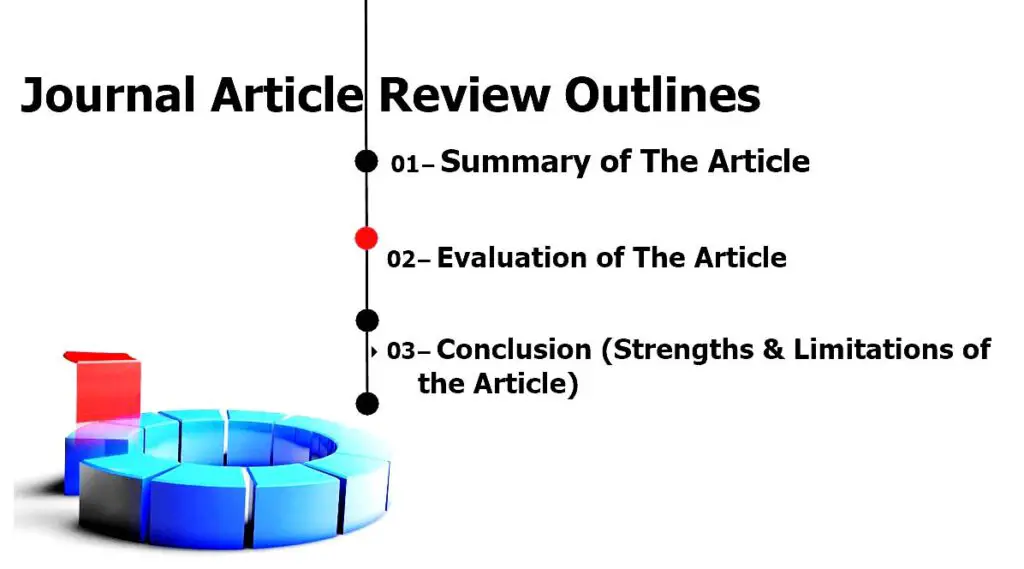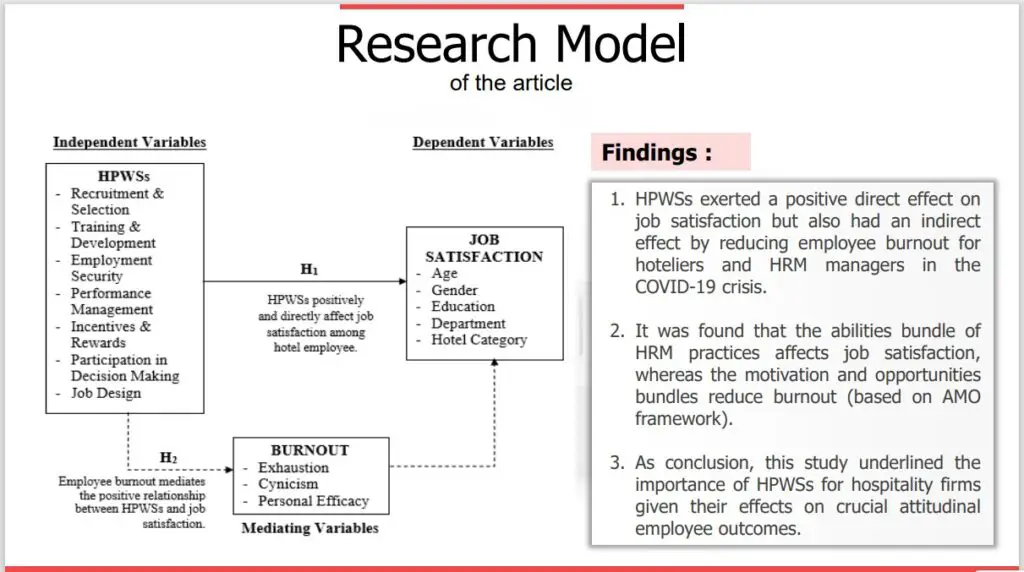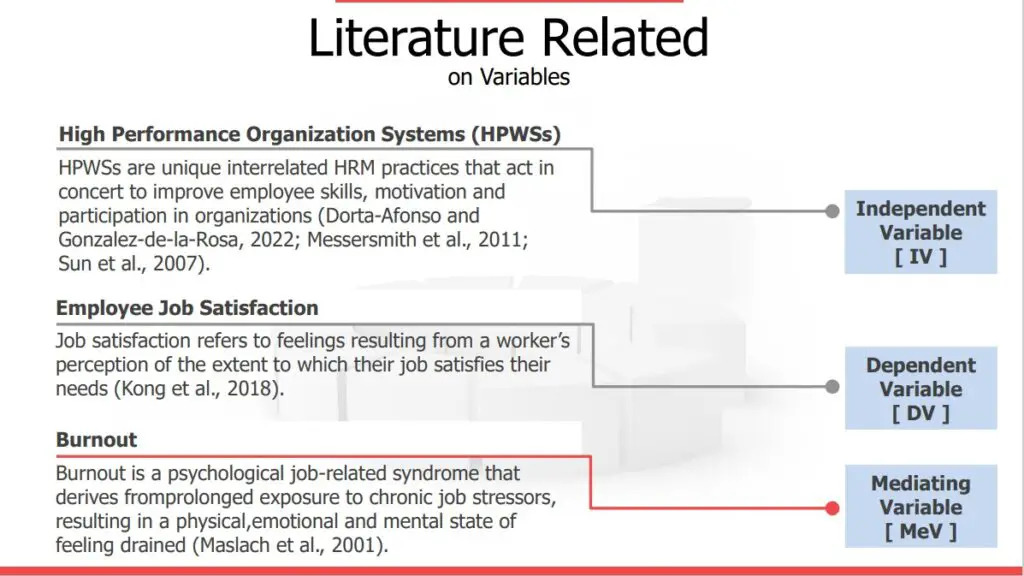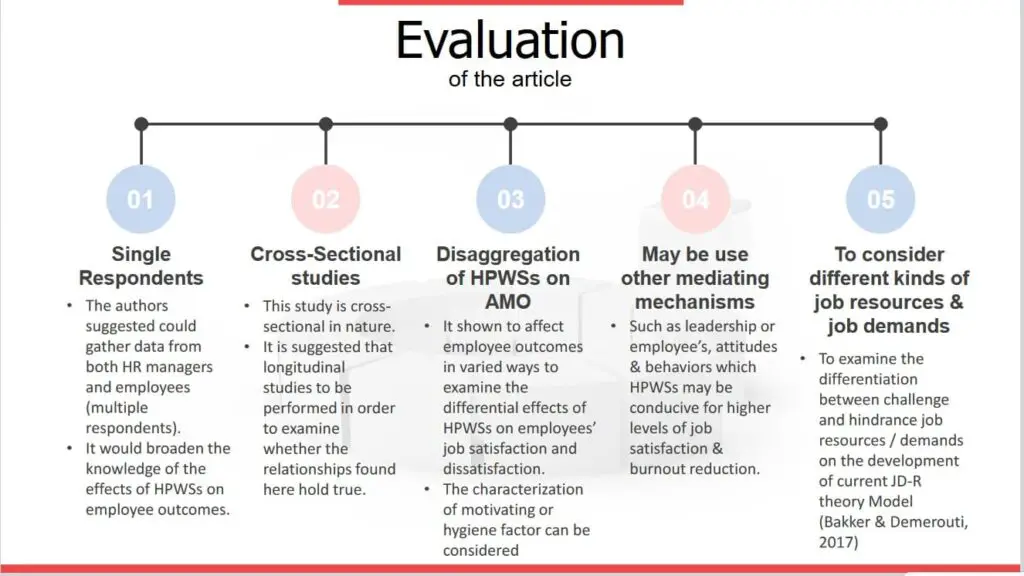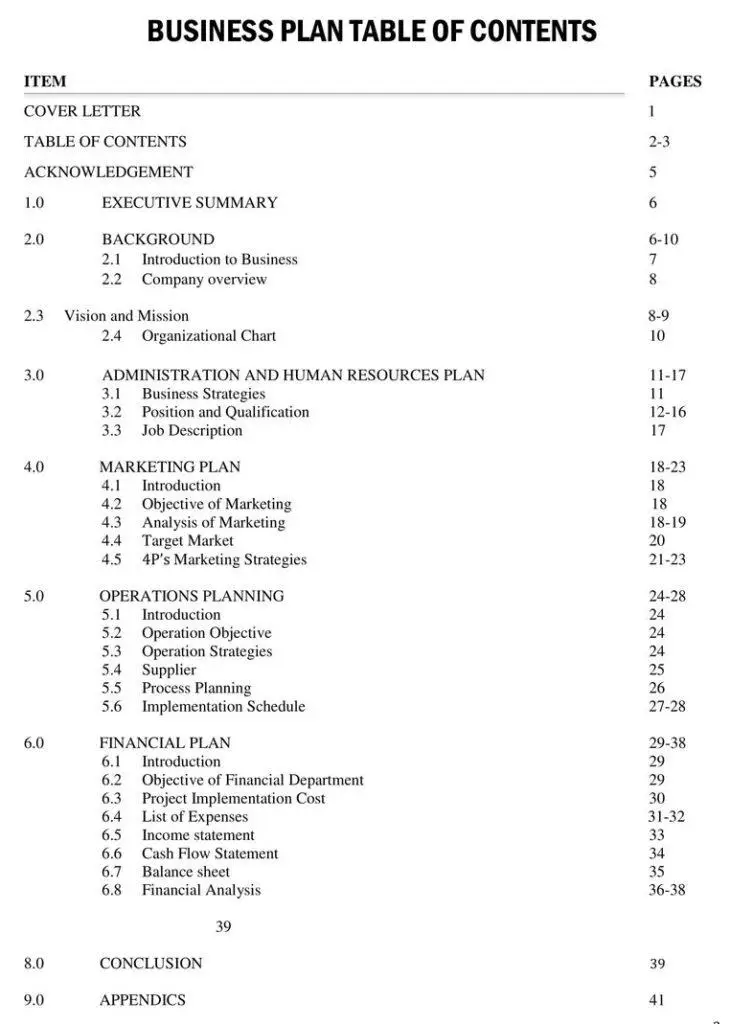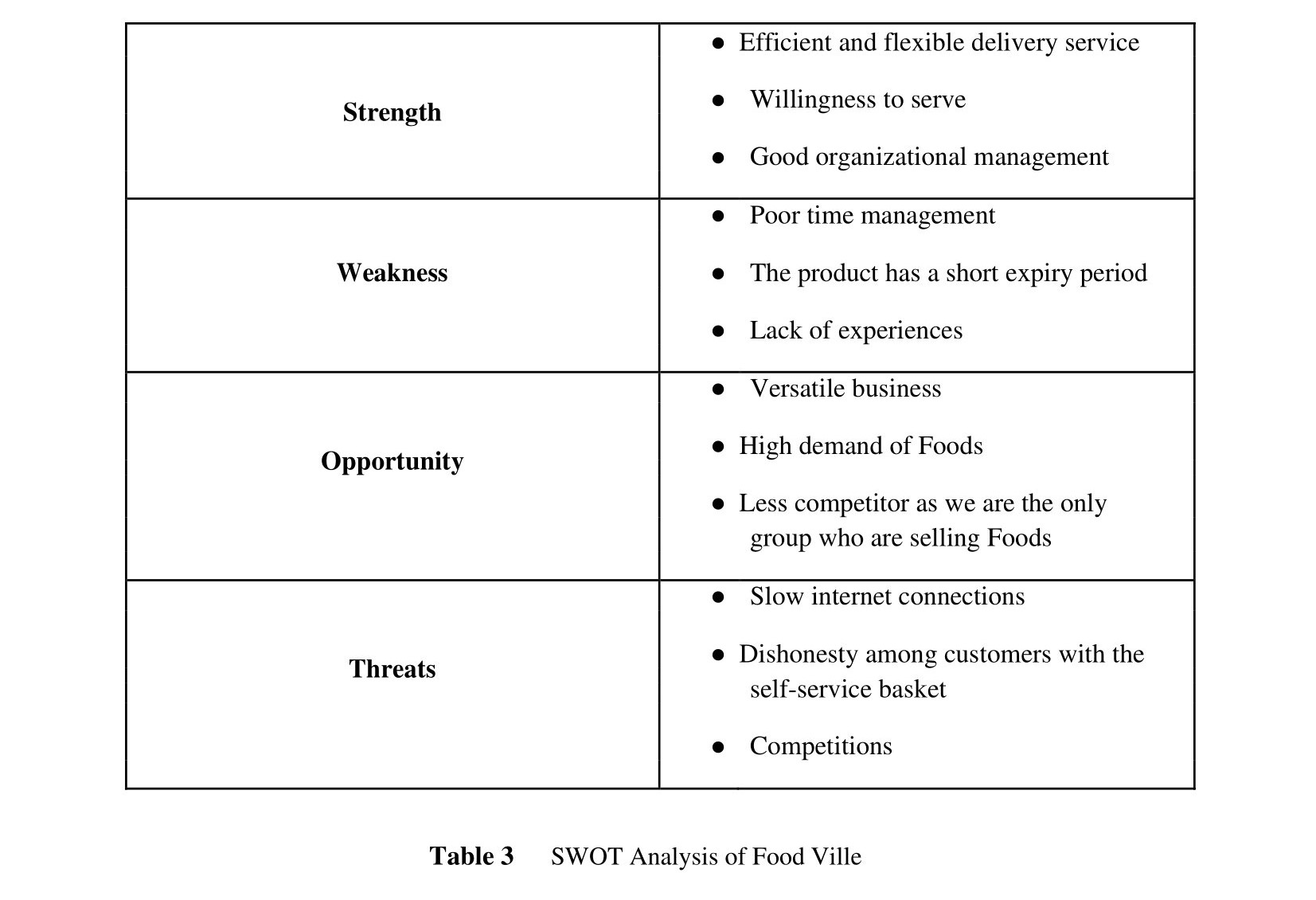Academic Journal Article Review Example. Example of a Journal Article Review. Journal Review Example APA. Example of Article Review Assignment pdf.
Journal Article Review
Journal article review refers to a systematic approach to critiquing other scholar’s work in the research field. It is an academic strategy to summarize academic journals with strengths and weaknesses. The academic journal review system allows reviewers to clarify the authenticity and contribution of papers to disciplines in the study. It represents the article’s values with in-depth analysis. The academic journal article review includes a summary, evaluation, and conclusion with strengths and limitations.
Academic Journal Article Review Outlines
- Summary of the article
- Evaluation of the article
- Conclusion (Strengths & Limitations of the article)
How To Review Academic Journal Articles
The author explains how to review academic journals with examples. It certainly enhances students’ ability to review other experts’ works. The example will provide an in-depth understanding of reviewing articles.
1. Summary of The Article
The summary of the article includes Problem Statements, Research Questions, Research Objectives, Research Methodology, Significance, Research Model, Variables and Findings.
The author depicts an example to demonstrate how to summarize the academic journal.
| Problem Statements | Research Questions | Research Methodology | Significance |
| 1. Less research has been done on how HPWSs affect employee outcomes, such as an employee’s health or job satisfaction which is crucial in the COVID-19 situation (Kloutsiniotis and Mihail, 2020a) (Adikaram et al., 2021).
2. Uncertain & highly stressful context has aggravated the problem of burnout (Ayachit & Chitta, 2021), which was customary among hotel employees even before the COVID-19 pandemic (Tsui, 2021; Wong et al., 2019). |
1. What are the mechanisms through which HPWSs practices will effect employee job satisfaction? 2. What are the effects of burnout as a mediator in the relationship between HPWSS and employee job satisfaction? |
1. Research Method: Exploratory; Quantitative. 2. Research Design: Descriptive 3. Respondents: 202 sample of respondents on hotel employees in Gran Canaria (Canary Islands, Spain) during Spring 2021. 4. Data Collection Method: Survey-based questionnaire (using a paper pen or an electronic version); convenience sampling process 5. Data Analysis: Correlation Analysis; Validity & Reliability using Partial Least Squares- Structural Equation Modelling (PLS-SEM) analysis. |
1. To contribute theoretical literature development of HPWSs practices on employee job satisfaction in hospitality & tourism firms. 2. To recommend the practical implications to be useful for HR specialists & hoteliers in the implementation of HPWSs mechanisms in the current pandemic situation, in order to mitigate its negative effects on an employee-centered approach.
|
Research Objectives |
|||
| 1. To examine the direct effects of HPWSs on employee job satisfaction.
2. To examine the indirect effects of HPWSs through a reduction in burnout on employee job satisfaction. |
Academic Article Research Model Review Example
Academic Journal Article Variables Review Example
Variables of the Study
Independent Variable [ IV ]
- High-Performance Organization Systems (HPWSs)
(HPWSs are unique interrelated HRM practices that act in concert to improve employee skills, motivation, and participation in organizations (Dorta-Afonso and Gonzalez-de-la-Rosa, 2022; Messersmith et al., 2011; Sun et al., 2007).
Mediating Variable [ MeV ]
- Burnout
Burnout is a psychological job-related syndrome that derives from prolonged exposure to chronic job stressors, resulting in a physical, emotional, and mental state of feeling drained (Maslach et al., 2001).
Dependent Variable [ DV ]
- Employee Job Satisfaction
Job satisfaction refers to feelings resulting from a worker’s perception of the extent to which their job satisfies their needs (Kong et al., 2018).
Findings of the Article
- HPWSs exerted a positive direct effect on job satisfaction but also had an indirect effect by reducing employee burnout for hoteliers and HRM managers during COVID-19.
- It was found that the abilities bundle of HRM practices affects job satisfaction, whereas the motivation and opportunities bundles reduce burnout (based on the AMO framework).
- In conclusion, this study underlined the importance of HPWSs for hospitality firms given their effects on crucial attitudinal employees.
2. Evaluation of the Article
The evaluation of the academic article contains the hypothesis, theory, framework, data collection and analysis, and findings of the study.
Journal Article Hypothesis Review Example
Based on the Findings
Hypothesis 1:
- The findings were aligned with the previous studies that there is a positive relationship between HPWSs and employee job satisfaction in hospitality firms, thus consistent with SET in supporting the mutual gain Thus, consistent with SET in supporting the mutual gain perspective.
- Based on JD-R theory, it can be concluded that HPWSs have positive benefits offered by the organizations that can help employees overcome daily demands in achieving their desired state within their
Hypothesis 2:
- The study found that HPWSs practices have negative direct effects on burnout and exert an indirect effect on the job.
- The indirect effect is explained by to pandemic situation which has brought higher workloads and for the same reasons, it would apply to employment
- Thus, the study demonstrated that the three HRM bundle practices (abilities, motivation, and opportunities) may alleviate burnout in stressful situations which in turn would increase employee jobs.
Academic Journal Article Adopted Theories Review
Based on Theories:
01. The Social Exchange Theory
This study advocates the mutual gains perspective based on social exchange theory (SET) and it hypothesizes that HPWSs are a way to boost employee job satisfaction as a result of their adherence to the fundamental reciprocity principle (Cropanzano and Mitchell, 2005).
As a result, employees will view HPWSs as an indication that their bosses care about them and will reciprocate by having better attitudes (i.e. a high level of job satisfaction).
Thus, the study has highlighted the usefulness of the SET in explaining the process through which HPWSs influence employee attitude and the significant role of trust as a social exchange which can be evident in the HPWSs.
02. The Organizational Support Theory
This argumentation aligns with the organizational support theory (Eisenberger et al., 1986), another HRM approach that has been considered as a solution to the pandemic challenges (e.g. Chen and Eyoun, 2021; Cheng et al., 2022) to foster employee performance, engagement and commitment (Eisenberger et, 2020; Kurtessis et al., 2017).
This finding is consistent with the organizational support theory in supporting the benefits of HPWSs for hospitality firms that can enhance employee job satisfaction in harsh working
03. The Job-Demand Resources Theory
The authors use the J-DR theory to propose that HPWSs provide workers with resources, such as skills, autonomy, feedback, and growth opportunities (Bakker and Demerouti, 2017).
Consequently, HPWSs may very well contribute to a reduction in worker burnout, which may in part improve levels of job satisfaction, therefore supporting the mutual gains perspective.
Academic Journal Research Method Analysis
Single Respondents:
The authors suggested gathering data from both HR managers and employees (multiple respondents).
It would broaden the knowledge of the effects of HPWSs on employee outcomes.
Cross-Sectional studies:
This study is cross-sectional. Therefore, it is suggested that longitudinal studies be performed to examine whether the relationships found here are true.
Disaggregation of HPWSs on AMO:
It shown to affect employee outcomes in varied ways to examine the differential effects of HPWSs on employees’ job satisfaction and dissatisfaction.
The characterization of motivating or hygiene factors can be considered.
May use other mediating mechanisms:
Such as leadership or employee, attitudes & behaviors which HPWSs may be conducive to higher levels of job satisfaction & burnout reduction.
To consider different kinds of job resources & job demands
To examine the differentiation between challenge and hindrance job resources/demands on the development of the current JD-R theory Model (Bakker & Demerouti, 2017).
Conclusion With Strengths and Limitations
This study does not clearly on systems of HRM practices, it explores processes and recommendations to enhance the HPWSs effects, especially in the service sector.
I agree that HPWSs could be considered one of many resources of organizational support that managers may take into consideration the possible negative effects associated with HPWSs & specific bundles of HRM practices.
HPWSs are unique interrelated HRM practices that act in concert to improve employee skills, motivation & participation in organizations.
In conclusion, I learned that the relationship between HRM practices & organizational performance has space for progress and becomes a good indicator of a company’s success.
Journal Review Example APA
The author demonstrates some examples of the article review APA that students can replicate to complete article review assignments. The author illustrated this journal review example for students’ instructions.
Article Review Example APA-1
ARTICLE REVIEW
Selected Article Title: Artificial intelligence adoption among human resource professionals: Does market turbulence play a role?
Author : Md Asadul Islam, Faraj Mazyed Faraj Aldaihani, Seyed Ghasem Saatchi
Publish year:2023
Journal: Wiley Online Library
Quartile: Q1
Citation Count: 01 (as of 06/01/2024 via Google Scholar)
Citation: Islam, M. A., Aldaihani, F. M. F., & Saatchi, S. G. (2023). Artificial intelligence adoption among human resource professionals: Does market turbulence play a role? Global Business and Organizational Excellence, 42(6), 59-74.
URL: https://onlinelibrary.wiley.com/doi/10.1002/joe.22226
Introduction
In Islam et al.’s article above, they examined the mediating role of market turbulence on Artificial intelligence adoption among human resource professionals in the tourism and hospitality industry of Malaysia. The authors also investigate the antecedent of artificial intelligence (AI) based on the Technology Acceptance Model (TAM) and Technology-
Organization-Environment (TOE) model. This paper identifies what factors influence HR employees to accept and use AI technology in organizations. Based on the data collected from 389 HR employees, the study proves that Perceived Ease of Use, Perceived Usefulness, Technology Competency, Top Management Support, and Competitive Pressure positively and significantly affect AI adoption. Additionally, Market turbulence (MT) moderates the relationship between all IVs and DV (AI adoption). According to Saunders’ Research Onion, the research philosophy is positivism, an approach to theory development is deductive, methodological choice is quantitative, and survey.
Evaluation
The paramount output of this study is the factors that motivate employees to use new technology. Additionally, market turbulence plays a role in accepting innovation. According to the problem statement, there is little descriptive research on AI adoption in HRM with a limited theoretical contribution. Therefore, this empirical research plays a crucial role in contributing to the existing literature. Many studies show that AI enhances HRM performance. However, a few current studies question the ability to adopt AI tools by HR employees. AI tools become crucial due to the COVID-19 pandemic changing organizational structure, business model, and operational context. It inspired the authors to conduct this empirical research.
The authors adopted two important theories (TAM & TOE) to include in this research are very relevant. The IVs have been adopted from both models and extended in the new context. As per data collection sections, the authors distributed approximately 700 survey questionnaires through non-probability convenience sampling. It is very difficult to get an appointment to meet HR employees physically, Therefore, the authors chose the non-probability convenience sampling method to select people randomly and subjectively. Participants received a cover letter summarizing the purposes and usefulness of this research. However, of the 534 survey questionnaires collected where 389 were considered useful.
The authors used the partial least squares-structural equation modeling (PLS-SEM) to analyze the data and reveal results. They utilized a confirmatory factor analysis (CFA) test to ensure reliability and validity measurement.
This study explains the antecedents and market turbulence role of AI adoption among HR professionals in the tourism industry that have both theoretical and managerial significance. In short, human resource professionals will accept new technology to enhance performance. It will assist the organization to achieve competitive advantages.
Conclusion and Limitations
The study examined the relationship between perceived ease of use (PEOU), perceived usefulness (UP), technology competence (TC), top management support (TMS), competitive pressure (CP), and AI adoption (AIA) using SEM-PLS. This study offers significant implications for theoretical and managerial perspectives. The tourism and hospitality industry in Malaysia includes hotels, restaurants, airline companies, and tour and travel agencies. These organizations encounter both local and international competition. Therefore, this study assists the top management in setting new policies. The manager needs to develop the employees’ knowledge regarding the perceived ease of use and perceived usefulness of AI technologies.
The first limitation of this study is collecting data from both male and female employees only from Malaysian tourism organizations. Therefore, the researchers suggested to conduct more research in cross-sectional approaches. The authors also recommended conducting more studies on this topic in a longitudinal method. However, this research has significant outcomes with testing theory highlighting how market turbulence can foster the relationship between AI adoption and organizations.
Article Review Example APA-2
| Selected Article Title: Transformational Leadership and Job Performance: The Mediating Role of Work Engagement Author: Lai, Tang, Lu, Lee, & Lin. Publish year: 2020 Journal: SAGE Open (published by SAGE) Quartile: Q2 Citation Count: 194 (as of 28/10/2022 via Google Scholar) Citation: Lai, F. Y., Tang, H. C., Lu, S. C., Lee, Y. C., & Lin, C. C. (2020). Transformational leadership and job performance: The mediating role of work engagement. Sage Open, 10(1), 2158244019899085.URL: https://journals.sagepub.com/doi/abs/10.1177/2158244019899085 IntroductionIn Lai et al.’s article above, they explored the mediating role of work engagement (WE) between the relationship of transformational leadership (TFL) and employee job performance (JP) and helping behavior (HB). Specifically, how the nurses’ work engagement intervenes in the impact of transformational leadership of head nurses on the job performance of nurses. The study shows that TRL gives rise to WE but not JP and HB. We mediated the relationship between TFL JP and HB. The results are able to support all three of their hypothesis. EvaluationThe central argument is that it is important to comprehend the factors and underlying mechanisms that give rise to employee motivation, which makes them perform well in their in-role task and perhaps go the extra mile. In addition, because of a wider variety of work behaviors, work-engaged employees are more likely to help their peers. Transformational leaders provide robust and common goals for employees and convince them that those goals are meaningful. Transformational leaders may improve employee task performance and helping behaviors through work engagement. Work-engaged employees deploy themselves to the in-role task and devote their energy to behavior that gives rise to achieving organizational goals. In short, employees will get work-engaged when transformational leaders can get their buy-in by providing meaningful goals, offering a safe and supportive environment, and providing accessible resources. The paper did well in reducing concerns about common method variance (CMV) errors where it uses three waves of study, collecting data from leaders and members. The paper did provide practical implications for personnel selection and leadership training:During day-to-day interaction, lower level (ward head nurse) TFL, who have more contact with members, might have more opportunities to (i) instill in members the organization’s vision and collective goals, (ii) offer emotional support when members feel frustration or help them overcome difficult tasks with new solutions immediately. Through training, leaders may enhance their coaching skills including how to set unit goals, communicate with members about these goals, motivate members to achieve goals, invent new methods for problem-solving, and cheer up members when they experience setbacks. The research could have better explained the mechanism of how TFL leadership gives rise to WE by using the job demands-resource (JD-R) model (Bakker and Demerouti, 2016). The JD-R model proposed two paths in their model: (i) motivational path and (ii) health-impairment path. According to the motivational path, job and personal resources give rise to employee engagement. It subsequently affects an employee’s job performance. In Lai et al.’s article above,JD-R could be used as such that TFL can be conceptualized as job resources for the employee that give rise to employee engagement and consequently lead to better job performance and helping behaviors among nurses. In addition to that, the paper could have tested their assumption on psychological fulfillment (i.e. psychological meaningful, psychological safety, and psychological availability) that led to employee engagement. Meaning, that instead of directly testing TFL to WE, it is possible that TFL led to meaningful work and then led to WE. The paper did a good job of representing the work engagement among nurses. However, in terms of gender, this is insufficient to make generalizations about male nurses even within the same industry. The author disclosed the limitations of the study such as the generalizability of their findings, as they collected from one profession and it was dominated by females. Additionally, some citations could have been more recent. For example, when citing past studies to demonstrate empirical evidence: “prior research highlights the positive relationship between motivation and members’ performance (e.g., Cerasoil et al., 2014)”. One of the explanations could be that when initiating their study above in 2019, citing a 2014 paper was still acceptable because it was still within five years back then. ConclusionThe ward head nurse’s transformational leadership has an impact on nurses’ outcomes (i.e. job performance and helping behavior) through work engagement. Such individual employee outcomes are not only affected by monetary means but rather the perceived support of his or her surroundings (i.e. leadership, job characteristics, support, feedback, autonomy, etc.). It means employees’ behavioral outcomes are influenced by their psychological processes. Whereby, when certain psychological conditions of the employees are fulfilled, they are more likely to express themselves as a member of the organization and perform their in-role tasks well. This is in line with Kahn’s (1990) theory of the psychological condition of engagement that posits a work-engaged individual would need to be psychologically present. To meet that presence, one must experience psychological meaning, psychological safety, and psychological availability. |
Example of a Journal Article Review- 3
| Title: Socially responsible human resource management and hotel employee organizational citizenship behavior for the environment: A social cognitive perspective
Link: Article Link Introduction of the ArticleZhao and Zou(2020) conducted a study “Socially responsible human resource management and hotel employee organizational citizenship behavior for the Environment: A Social Cognitive Perspective” in which they, drawing inspiration from Social Cognitive Theory, SCT, explored the relationship and interplay of three key predictors that could modulate an employees’ response towards OCBE; SRHRM, which goes beyond offering enough pay and excellent working conditions and focuses on addressing employees’ personal and family needs, employee’s own Moral reflectiveness and Responsible leadership who form rules and norms and can directly motivate employees. While previous studies focussed on micro-level factors like psychological aspects, this study integrated them with macro-level factors, SRHRM. Evaluation of the ArticleThe researchers hypothesized that: Hypothesis-1, SRHRM was positively related to employee OCBE. Hypothesis-2 Moral reflectiveness mediated the relationship between SRHRM and OCBE. Hypothesis-3, Responsible leadership moderated the positive relationship between SRHRM and moral reflectiveness. Hypothesis-4 Responsible leadership via moral reflectiveness moderated the mediated relationship between SRHRM and employee OCBE. Employees from a large hotel group in Shanghai, China participated in the study. A total of ten hotels were chosen from three categories of hotels, three economy, three upscale, and four luxury hotels. The two-phase survey was conducted between 2018 -2019. The first batch of questionnaires on SRHRM and moral reflectiveness was given to 340 of the full-time employees, and 310 returned the completed questionnaires. In January 2019 second batch of questionnaires on OCBE and responsible leadership was dished out. 270 completed were returned. SRHRM was measured by employing a six-item scale from Orlitzky and Swanson (2006). Moral reflectiveness through a five-item developed by Reynolds (2008), OCBE was measured with Ten items developed by Boiral and Paill´e (2012) and responsible leadership was evaluated by using the five-item scale developed by Voegtlin (2011). Statistical analysis of questionnaires revealed that SRHRM had a positive impact on OCBE (p < 0.05), thus it supported Hypothesis 1. As for the second hypothesis, moral reflectiveness was found to be positively associated with OCBE (p < 0.01) whereas the positive impact of SRHRM on OCBE was not significant (p > 0.05) providing initial evidence to support Hypothesis 2. An indirect effect of SRHRM on OCBE through moral reflectiveness was found significant, further supporting Hypothesis 2. Hypothesis 3 indicated that responsible leadership moderated the relationship between SRHRM and moral reflectiveness. It was found that SRHRM was more significantly related to moral reflectiveness when responsible leadership was low as compared to when it was high. This supported Hypothesis 3. While testing Hypothesis 4, i.e., the indirect influences of SRHRM on OCBE, the moderated mediation effect of H4 was supported. ConclusionBased on their findings, the authors suggested that organizations should adopt strong HR policies. Induction process with a clear job description and through interviews organizations should select individuals who are naturally environmentally friendly. Then they must reinforce OCBE culture through training, evaluation, and providing incentives. Similarly, hotels should employ, train, and promote leaders who can support these cultures by engaging and motivating employees. However, the study was limited to one hotel and only to a responsible leader. Additionally, other leaders in the organization like servant leaders, and ethical leaders may be considered in future studies. |
